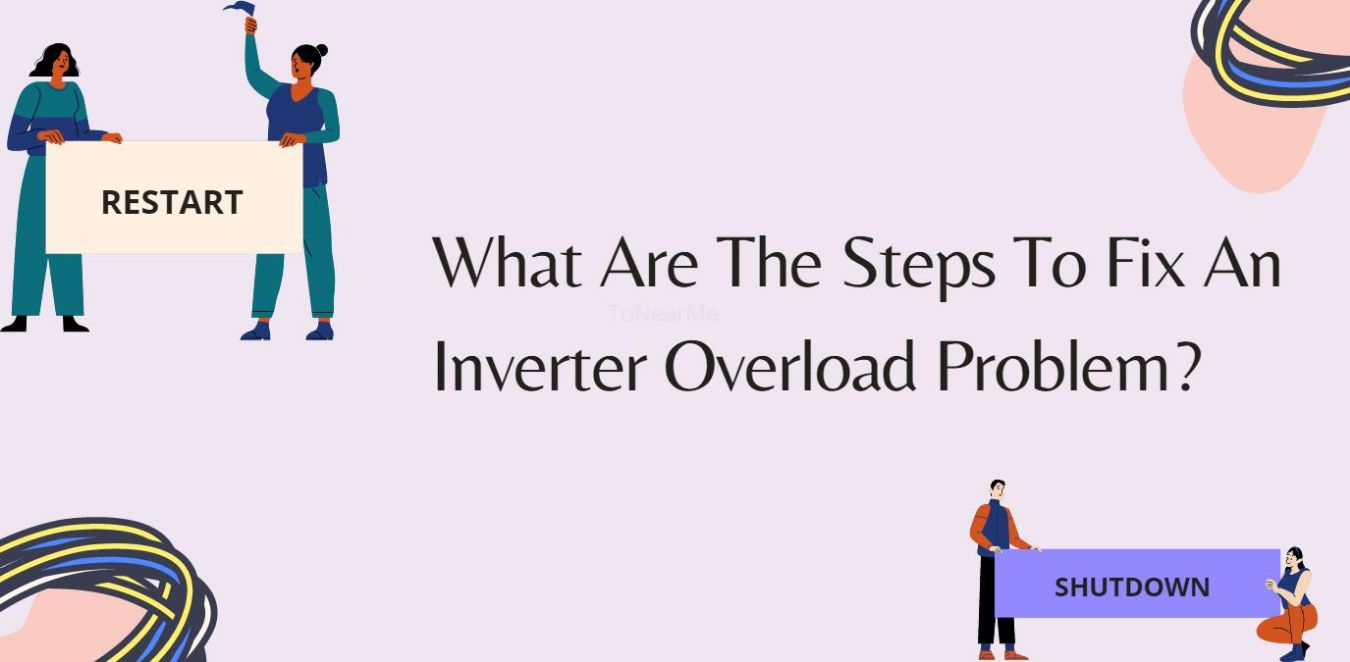A modern inverter includes overload protection, so even if the system does not run, the worst that can happen is that it won't work. The good news is that inverter overload after lighting can be fixed, but you should try these solutions first before calling customer support.
Reduce the appliance load and shut off the inverter. Restart the inverter if the overload message still appears and then click the reset button. The system should be powered off and then restarted after a few minutes if there is no reset button. Here you will see how the inverter shows overload after lighting.
How Does An Inverter Overload Occur After Lighting?
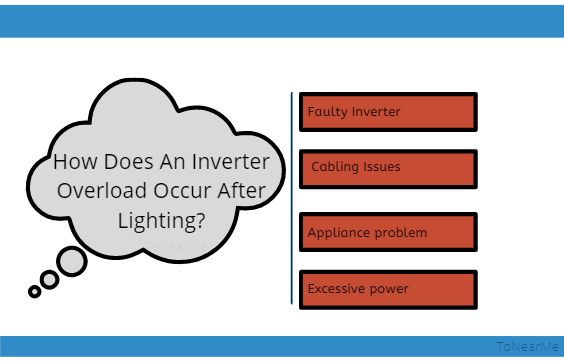
An inverter overload can be caused by any of the following.
- Faulty inverter. Its internal logic isn't working correctly.
- Cabling issues. There are loose or frayed wires on the cable wiring for the appliance and inverter.
- Appliance problem. Damage to the inverter prevents the appliance from running.
- Excessive power. Inverters cannot handle surge watts from appliances that run at watts or more.
No matter how big or small your inverter is, any one of these problems is possible. We can now start diagnosing the problem and coming up with a solution since we now know what the causes are.
However, it is important to note that inverters are not affected. The suggestions here may not apply to inverters and chargers because they have different components.
The three tests should be performed in order. Additionally, you should be familiar with cable wires and electrical power. You will also need to understand how inverters work.
The Inverter Must Be Tested
You should first eliminate the possibility that the inverter is the problem.
- The inverter should be turned off.
- You should check the battery bank if the inverter is connected to one. Is it fully charged? The batteries seem to be in good condition.
- Verify that both cables are securely connected. Take a quick tug.
- Remove the batteries and clean them. Make sure there is no dirt or corrosion building up on the terminals. This brush from Schumacher will do the job.
- Disconnect all appliances if they have not already been disconnected. Unplug the appliances from the sockets or shut off the circuit breakers.
- If the inverter is not rated for the wattage of the removed appliances, they should be removed. Find out each appliance's wattage or refer to this guide.
- Connect the inverter. Press and hold down the reset button if the system still says it's overloaded. Allow the system to reboot.
- To disable the inverter, turn it off. Then turn it back on after a few minutes. The inverter's internal components must be the cause of the condition's persistence.
Testing The Cable
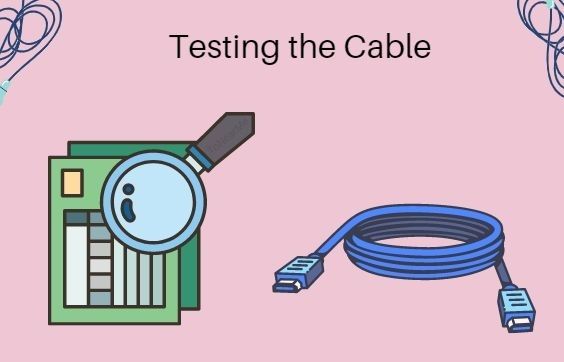
Checking the cables is the last thing you can do. Cable wires can also be overloaded, just like appliances and inverters.
Unplugging the appliance is all you need to do. When the inverter cable wire is damaged, you will receive an error message.
Replace the cable immediately if it is frayed. InstallGear's 10 ft Power Inverter Cables are recommended when the system uses 5 AWG.
How Does An Overloaded Inverter Affect You?
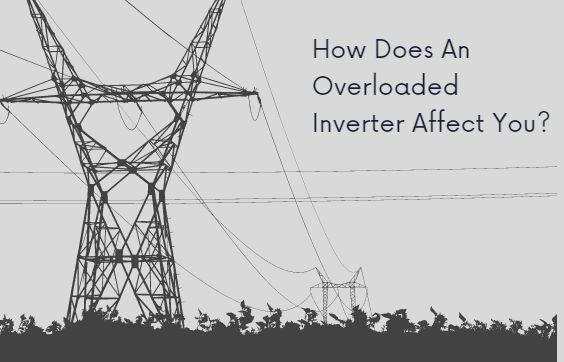
Older inverters might malfunction if they're overloaded, or even damage the appliances. Modern inverters, however, will either not start or will simply stop working. Additionally, they may produce a considerable amount of noise.
The inverter won't run if the load exceeds its capacity. When you load the system beyond its capabilities when it is already running, it will halt.
Restarting or shutting down the inverter is the only option. The load may only be reduced if the inverter is restarted. The majority of inverters have these safety features, whether they are small or large.
A load greater than the capacity of an inverter will display an error code. Occasionally, the inverter will cease to operate. In any case, that should be enough notification for you to fix the system.
Frequently Asked Questions On Inverter Overload After Lighting
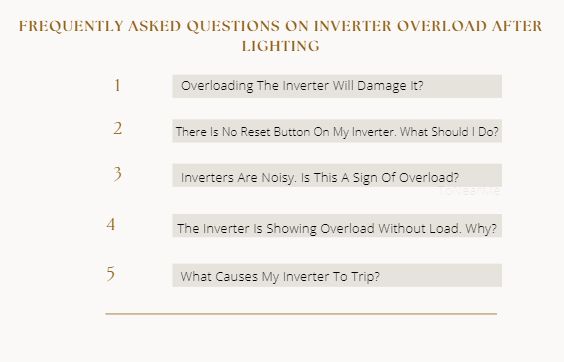
Inverters may get overloaded for many different reasons, so this FAW may prove useful. The questions below may provide answers to what you are experiencing.
1. Overloading The Inverter Will Damage It?
It is essential that you fix the problem as soon as possible, even if this is built into the inverter. Inverters and appliances can be damaged by repeated overloading.
If the load exceeds the inverter's capacity, it will not operate. If you add another 1400 watts to a 2000 watt inverter with a 1300 watt load, you will overload the inverter. This will result in the inverter shutting down.
The inverter will restart until it crashes in the worst-case scenario. If you see an overload message, reduce the load right away.
2. There Is No Reset Button On My Inverter. What Should I Do?
To turn the power back on, turn the power off and wait a few seconds.
You can reset the system by turning off the system and unplugging the AC power supply, solar panel disconnect system and main electrical panel.
In reverse order, connect and turn on the components 30 seconds after shutting them off.
3. Inverters Are Noisy. Is This A Sign Of Overload?
A low humming sound is often produced by inverters, but it is barely audible.
It is most likely the cable that is too small that causes the inverter to make so much noise.
The voltage will drop and cause noise if the wire is the wrong size.
4. The Inverter Is Showing Overload Without Load. Why?
Inverter problems are caused by an internal problem. One or more components are malfunctioning, and they need repair or replacement.
Restart the inverter several times before contacting customer support. It may take a couple of resets to refresh the system after it has been overloaded with appliances.
As soon as an inverter displays an overload message, you need to lower the load.
There may be a delay before the effect is registered, so you may need to restart or reset your computer. Getting the inverter repaired if it doesn't work is your only option.
5. What Causes My Inverter To Trip?
It is also an indication of overloading. An inverter tripping, shutting off, or repeatedly starting and stopping indicates too much power is coming into the system. In this case, the inverter can not handle the current.
Conclusion
Due to the fact that modern solar inverters have several safety features, an overloaded system is unlikely to cause a serious problem. You can solve any overload issues here using the simple DIY tips provided here.





